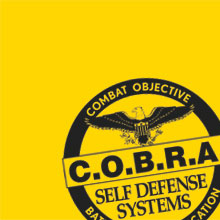
Practical self-defense techniques are physical skills and strategies that individuals can use to protect themselves in dangerous situations. People of various ages and physical abilities can effectively, easily, and applicably learn these techniques. While mastering self-defense requires consistent practice and training, here are some fundamental practical techniques that can empower you to enhance your personal safety
Palm Strike: The palm strike is a simple and powerful technique where you use the heel of your palm to strike the attacker’s nose, chin, or throat. This technique can cause significant pain and disorient the attacker, providing you with an opportunity to escape. You can use it to strike if someone is choking you from the front.
Eye Gouge: The eye gouge involves using your fingers or thumbs to target the attacker’s eyes. Gouging the eyes can cause immediate pain and temporary blindness, giving you a chance to escape or gain the upper hand.
Groin Strike: Women often think the groin kick is the Holy Grail of self-defense. However, this technique has several downsides:
(1) It puts you on one leg, leaving you unbalanced and giving the attacker the chance to grab your kicking leg.
(2) You are trying to hit a target that is smaller than your shoe is wide, that you can’t directly see, in an area that men have been protecting for most of their lives. The easiest way to defend against a kick to the groin is simple to move the leg a few inches in toward the body, and the kick will land there, instead of its intended target. A much better alternative is the groin grab.
The groin grab is a highly effective self-defense move against male attackers. The best way to accomplish this to grab the genitalia, twist, and pull. This causes a significant amount of internal and external damage. Fingers differentiate between shape and texture, unlike a foot in a shoe, so you know when you have the target. This grab can also be done from almost any angle – front, side, back, and on the ground.
Knee Strike: The knee strike is a close-range technique where you use your knee to strike the attacker’s groin, abdomen, or face. This move is particularly useful if the attacker is in close proximity.
Elbow Strike: Elbow strikes are powerful and versatile techniques that can be used in various situations. Aim for the attacker’s face or throat to cause pain and create an opening to escape.
Escape from a Wrist Grab: If an attacker grabs your wrist, you can use leverage and technique to free yourself. Rotate your wrist in the opposite direction of the thumb’s pressure and pull away.
Escape from a Bear Hug: If an attacker wraps their arms around you from behind in a bear hug, drop your weight into an athletic posture and then use your elbows to strike the attacker’s face or body.
Verbal De-escalation: While not a physical technique, verbal de-escalation is essential for preventing potential confrontations from turning physical. Use calm and assertive communication to defuse tense situations whenever possible.
Remember, self-defense techniques should be practiced regularly to develop muscle memory and familiarity with the moves. Seek professional instruction from certified COBRA Self-Defense Instructors to learn these techniques safely and effectively. Additionally, always prioritize avoidance and escape over confrontation when it comes to self-defense. The ultimate goal is to protect yourself and get home safely.

